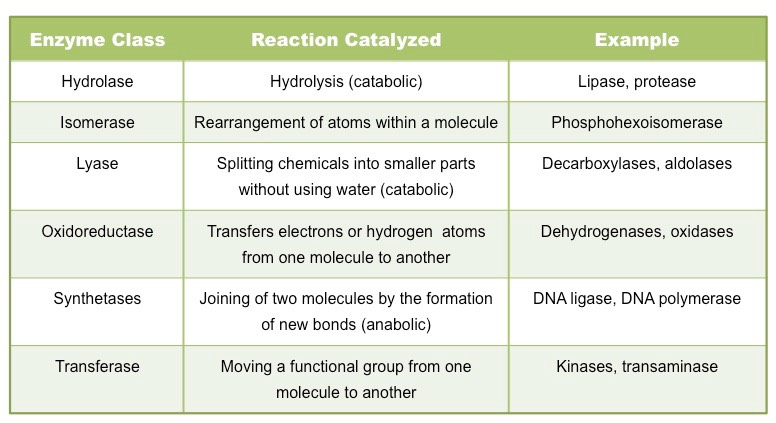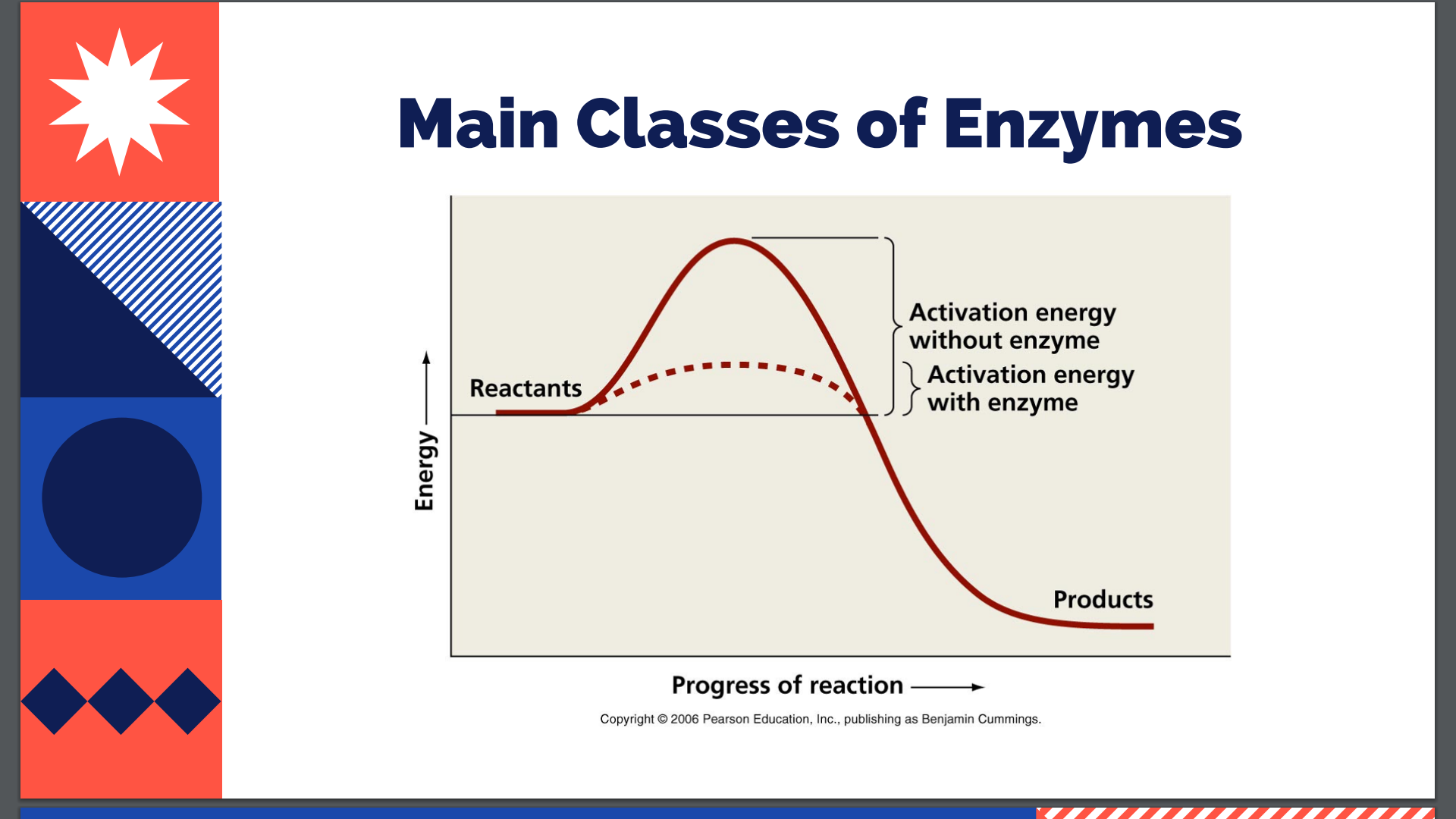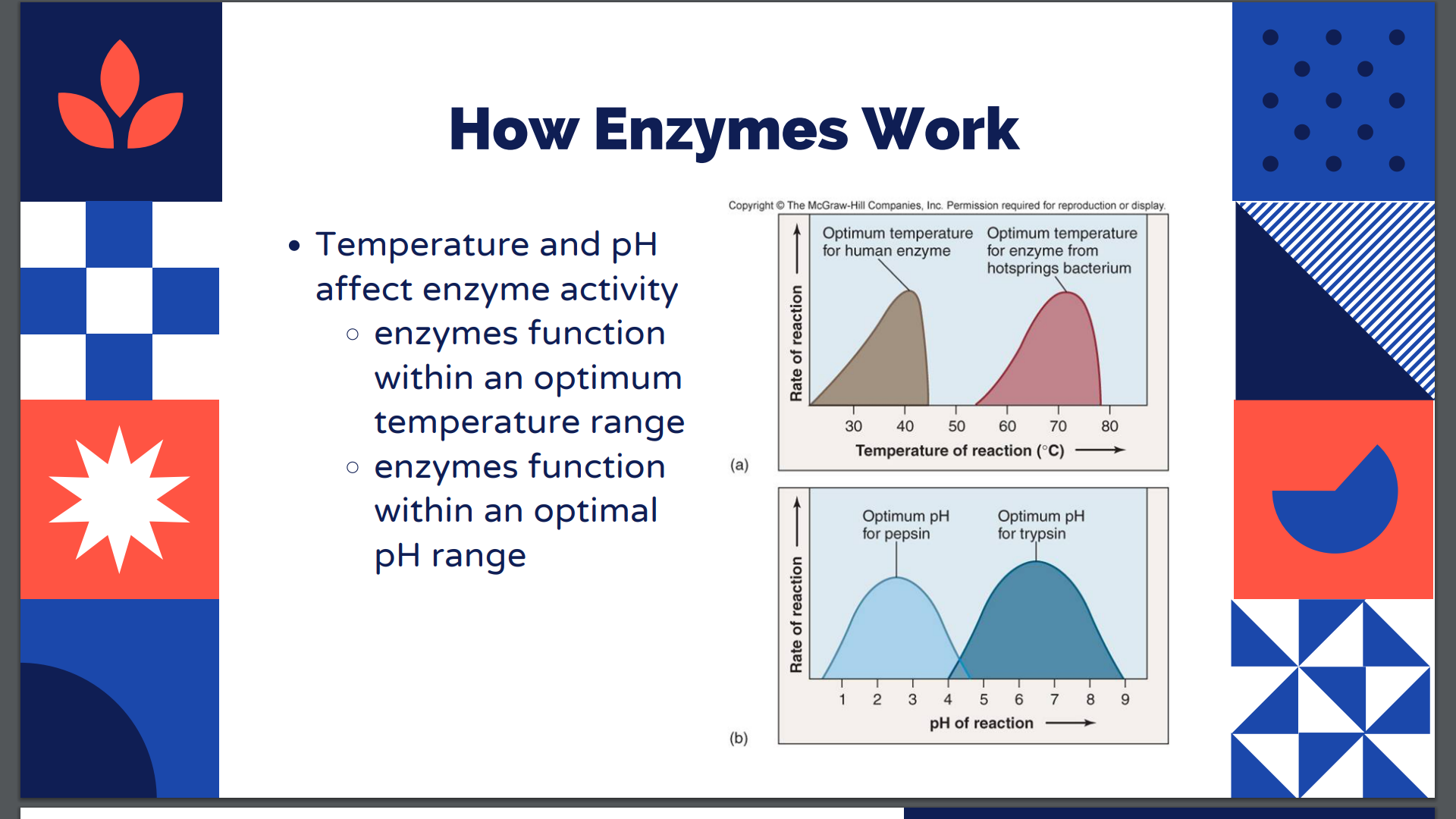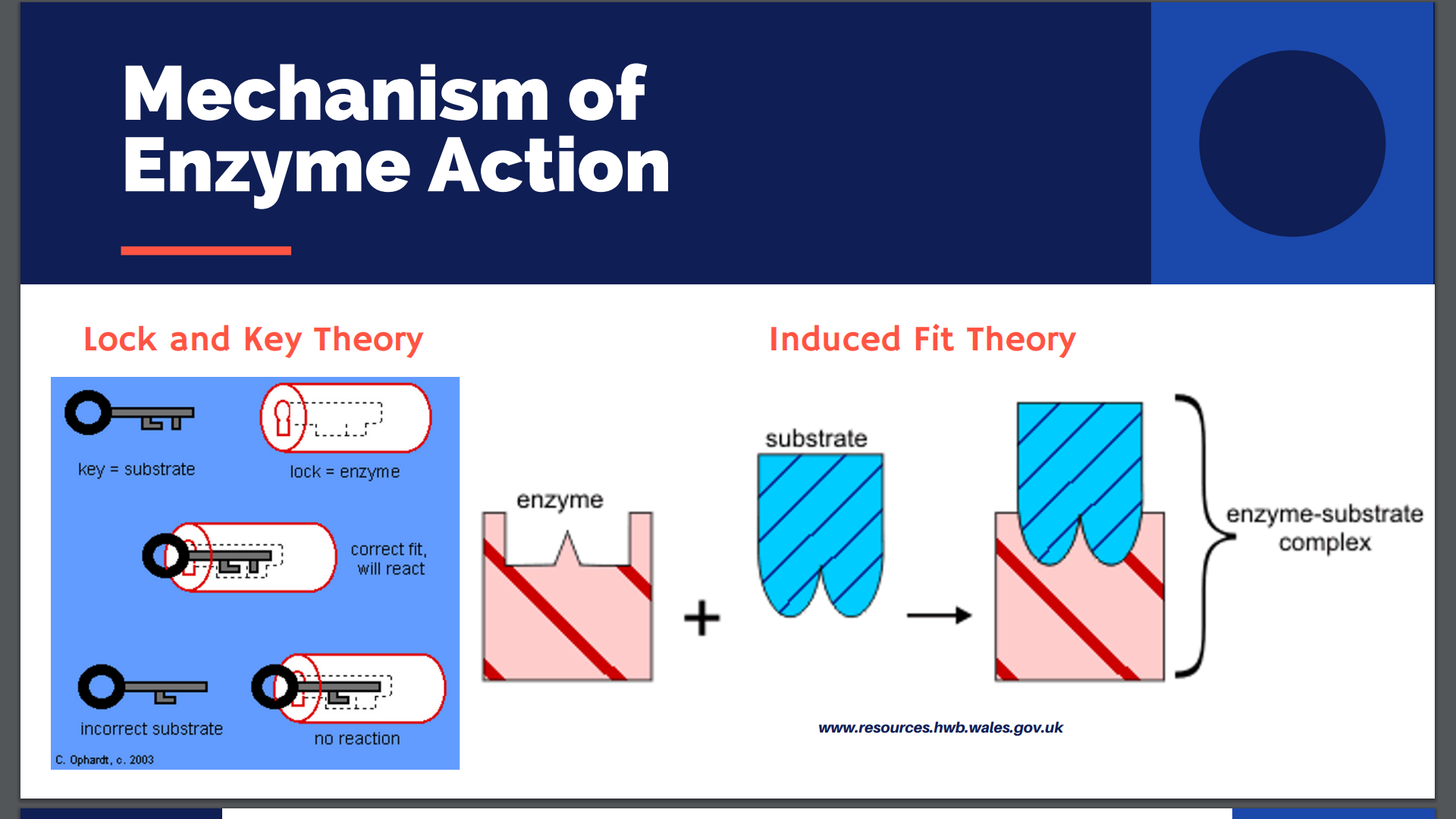
ENZYMES
Enzymes are proteins - James Batcheller Sumner
Lock-Key Theory
In 1894, German chemist Emil Fischer proposed the lock and key theory, which states that enzymes have a specific shape that directly correlates to the shape of the substrate. Basically, substrates fit into an enzyme the way a key fits into a lock.
Induced FIt Theory
The induced-fit model was first proposed by Koshland in 1958 to explain the protein conformational changes in the binding process. This model suggests that an enzyme, when binding with its substrate, optimizes the interface through physical interactions to form the final complex structure.
Catalysts
substances that speed up chemical reactions
enzymes are specific for one particular reaction or group of related reactions
many reactions cannot occur without the correct enzyme present
General Characteristics of Enzymes
Enzymes are well-suiter to their roles in three major ways:
they have enormous catalytic power (or enzyme action)
they are highly specific
Degrees of specificity
Absolute - they are the only one who should be partnered (Lock and Key Theory)
Relative - it is within the family of a compound or substance
Toothpaste - relative
Toothbrush - absolute
Stereospecificity - depends on type of stereoisomer
their activity can be regulated
Catalysis - also called enzyme action
Enzyme parts
Apoenzyme - a protein that forms an active enzyme system by combination with a coenzyme and determines the specificity of this system for a substrate.
Proenzyme or Zymogen - inactive enzyme that need activation (activates through activator)
Cofactor - inorganic helper of enzyme
Coenzyme - organic helper of enzyme
Enzyme nomenclature
Trivial System
based on the substrate of the enzyme and the type of reaction catalyzed
use of “-ase” ending
substrate and reactant are same
International Enzyme Commission
group of enzymes into 6 classes

Properties of Enzymes
Enzymes are proteins - because of amino acids
Enzymes are catalysts - cellular reactions must happen rapidly
Enzymes are highly specific
Chemical Reactions
All chemical reactions require an initial input of energy called activation of energy
Reactions become more likely to happen if their activation energy is lowered
This process is called catalysis
Catalyzed reactions proceed must faster than non-catalyzed reactions
Chemical reactions form new substance through activation
Lower activation energy = longer process

 How Enzymes Work
How Enzymes Work
enzyme-substrate complex
enzymes bind specifically to a molecule and stress the bonds to make the reaction more likely to proceed
active site is the site on the enzyme that binds to a reactant
binding site is the site on the reactant where the enzyme binds
The binding of the reactant to an enzyme causes the enzyme's shape to change slightly - leading to an "induced fit"
the enzyme lowers the activation energy for the reaction
the enzyme is unaffected by the chemical reaction and can be re-used
Mechanism of Enzyme Action
Allosteric site - where inhibitor attaches
presence of product can be a signal molecule
This can affects the process of enzymes
 Competitive - it mimics the shape of substrate
Competitive - it mimics the shape of substrate
Non-competitive - acts like repressor. It stops activity through alteration of active site.
How cells regulate enzymes?
Cells can control enzymes by altering their shape
repressors - feedback inhibition
activators
Enzyme Inhibition


ENZYMES
Enzymes are proteins - James Batcheller Sumner
Lock-Key Theory
In 1894, German chemist Emil Fischer proposed the lock and key theory, which states that enzymes have a specific shape that directly correlates to the shape of the substrate. Basically, substrates fit into an enzyme the way a key fits into a lock.
Induced FIt Theory
The induced-fit model was first proposed by Koshland in 1958 to explain the protein conformational changes in the binding process. This model suggests that an enzyme, when binding with its substrate, optimizes the interface through physical interactions to form the final complex structure.
Catalysts
substances that speed up chemical reactions
enzymes are specific for one particular reaction or group of related reactions
many reactions cannot occur without the correct enzyme present
General Characteristics of Enzymes
Enzymes are well-suiter to their roles in three major ways:
they have enormous catalytic power (or enzyme action)
they are highly specific
Degrees of specificity
Absolute - they are the only one who should be partnered (Lock and Key Theory)
Relative - it is within the family of a compound or substance
Toothpaste - relative
Toothbrush - absolute
Stereospecificity - depends on type of stereoisomer
their activity can be regulated
Catalysis - also called enzyme action
Enzyme parts
Apoenzyme - a protein that forms an active enzyme system by combination with a coenzyme and determines the specificity of this system for a substrate.
Proenzyme or Zymogen - inactive enzyme that need activation (activates through activator)
Cofactor - inorganic helper of enzyme
Coenzyme - organic helper of enzyme
Enzyme nomenclature
Trivial System
based on the substrate of the enzyme and the type of reaction catalyzed
use of “-ase” ending
substrate and reactant are same
International Enzyme Commission
group of enzymes into 6 classes

Properties of Enzymes
Enzymes are proteins - because of amino acids
Enzymes are catalysts - cellular reactions must happen rapidly
Enzymes are highly specific
Chemical Reactions
All chemical reactions require an initial input of energy called activation of energy
Reactions become more likely to happen if their activation energy is lowered
This process is called catalysis
Catalyzed reactions proceed must faster than non-catalyzed reactions
Chemical reactions form new substance through activation
Lower activation energy = longer process

 How Enzymes Work
How Enzymes Work
enzyme-substrate complex
enzymes bind specifically to a molecule and stress the bonds to make the reaction more likely to proceed
active site is the site on the enzyme that binds to a reactant
binding site is the site on the reactant where the enzyme binds
The binding of the reactant to an enzyme causes the enzyme's shape to change slightly - leading to an "induced fit"
the enzyme lowers the activation energy for the reaction
the enzyme is unaffected by the chemical reaction and can be re-used
Mechanism of Enzyme Action
Allosteric site - where inhibitor attaches
presence of product can be a signal molecule
This can affects the process of enzymes
 Competitive - it mimics the shape of substrate
Competitive - it mimics the shape of substrate
Non-competitive - acts like repressor. It stops activity through alteration of active site.
How cells regulate enzymes?
Cells can control enzymes by altering their shape
repressors - feedback inhibition
activators
Enzyme Inhibition


 Knowt
Knowt